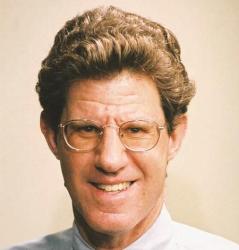INTRODUCTION
The evolution of urban rail transit in the United States over the past twenty years has been marked by three inescapable facts that signal an inefficient allocation of transit resources. Rail’s share of urban travelers is declining during a period when there has been little investment in new roads; its deficits are rising sharply; and yet investment to build new systems and extend old ones continues.
In 1980, two million Americans got to work by rail transit. Today, in spite of an increase in urban jobs and transit coverage, fewer than one million U.S. workers commute by rail, causing its share of work trips to drop from 5 percent to 1 percent. Although rail transit’s farebox revenues have consistently failed to cover its operating and capital costs since World War II, governmental aid to cover transit deficits has been increasingly available. Since 1980, annual operating subsidies have climbed from $6 billion to more than $15 billion today (APTA Transit Fact Books, figures in 2001 dollars). Capital subsidies have also increased as transit agencies struggle to maintain and provide new facilities, track, and rolling stock.
These worrisome trends, however, have not curbed U.S. cities’ appetite for rail transit service. During the 1990s, Cleveland, Washington, Santa Clara, Sacramento and other cities expanded their systems, while Los Angeles, Denver, Dallas, and St. Louis built new ones. Recently, Houston and Minneapolis opened new light rail lines while small, sparsely populated cities such as Sioux City, Harrisburg, and Staunton, Virginia suggested that they want federal funds to help build their systems. And although county residents repeatedly nixed a referendum to build a $4 billion extension of Washington’s Metro out to Dulles airport, planners nevertheless circumvented popular will and diverted increased toll revenue from the Dulles toll road to finance a portion of the ultimate extension.
Any private firm that was losing market share and reporting increasing losses would be hard pressed to attract funds to expand. Almost certainly, it would try to determine the most efficient way to contract. Of course, a transit agency does not seek to maximize profits, but its public financing is justified only if it is raising social welfare, where social welfare can be measured as the difference between net benefits to consumers and the agency’s budget deficit, also taking into account relevant externalities (for instance, the reduction in roadway congestion attributable to rail).
Although the costs and benefits of public rail transit operations have been debated in the policy community (see, for example, Litman [1]), we are not aware of a recent comprehensive empirical assessment of rail’s social desirability. The purpose of this paper is to estimate the contribution of each U.S. urban rail operation to social welfare based on the demand for and cost of its service. We find that with the single exception of BART in the San Francisco Bay area, every U.S. transit system actually reduces social welfare. Worse, we cannot identify an optimal pricing policy or physical restructuring of the rail network that would enhance any system’s social desirability without effectively eliminating its service.
Rail transit’s fundamental problem is its failure to attract sufficient patronage to reduce its high (and increasing) average costs. This problem has been complicated enormously by new patterns of urban development. Rail operations, unfortunately, are best suited for yesterday’s concentrated central city residential developments and employment opportunities; they are decidedly not suited for today’s geographically dispersed residences and jobs. At best, urban rail service may be socially desirable in a few large U.S. cities if its operations can be adjusted to mirror successful privatization experiments conducted abroad. Ironically, however, rail transit enjoys powerful political support from planners, civic boosters, and policymakers, making it highly unlikely that rail’s social cost will abate.



